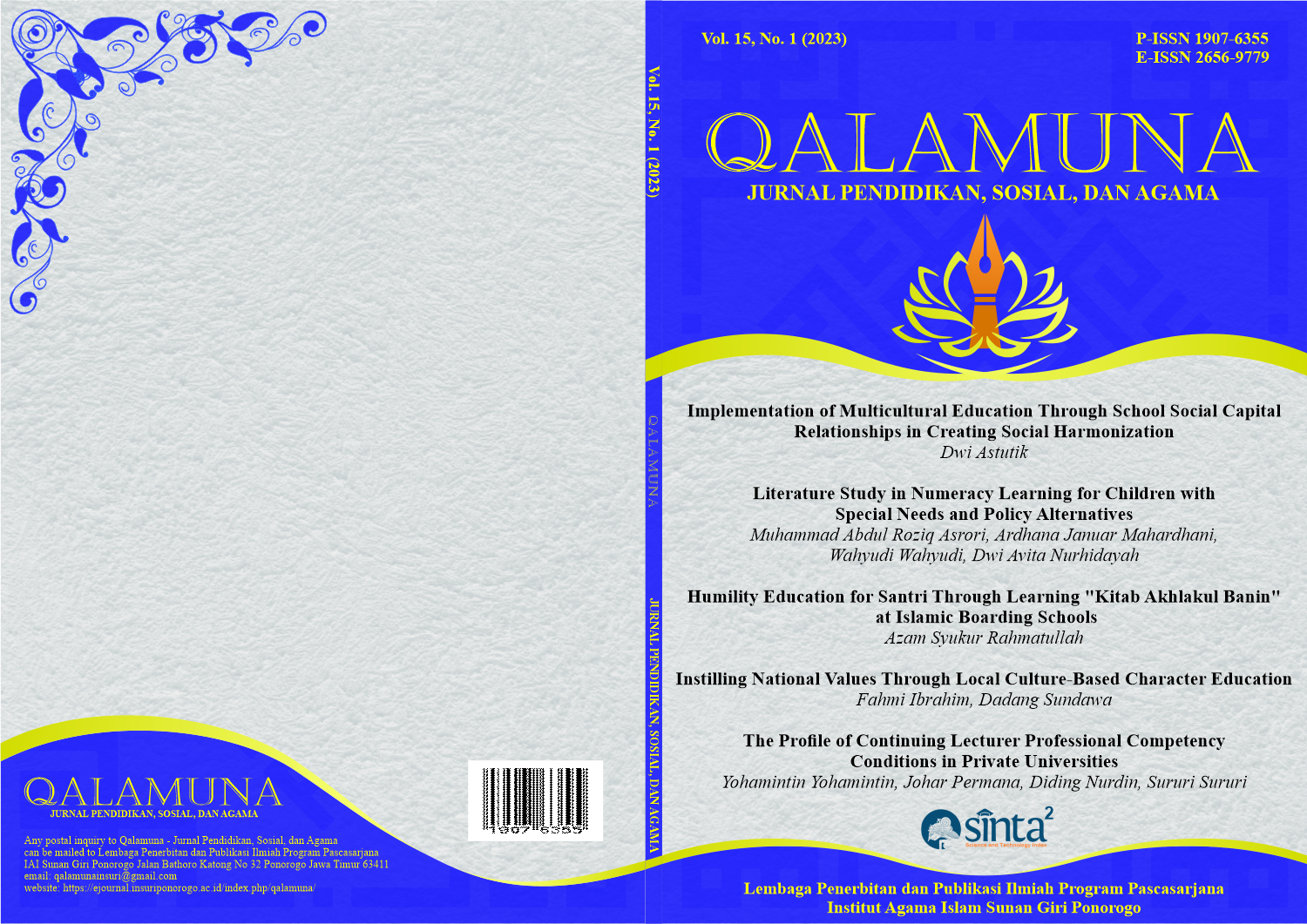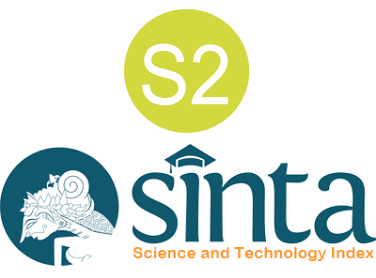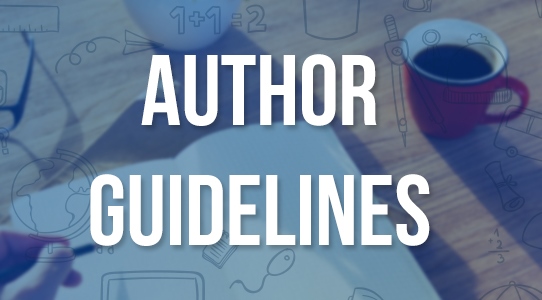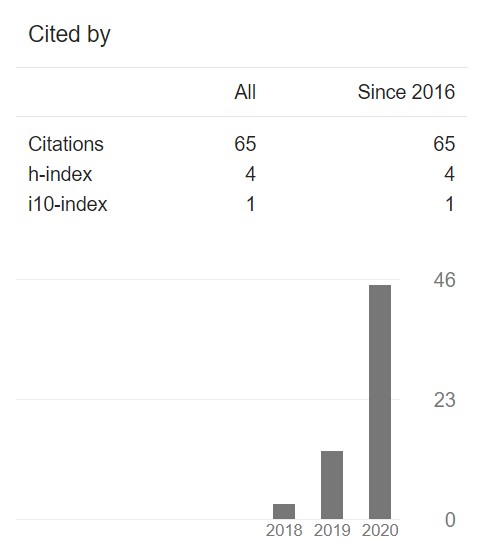Development of Students’ Science Worksheets Based on Liveworksheet As Alternative Learning Resources for Junior High School Students
DOI:
https://doi.org/10.37680/qalamuna.v15i1.2406Keywords:
Science worksheets, Liveworksheet, ADDIE modelAbstract
Liveworksheet-based science student worksheets on the substance pressure topic are a form of science worksheet development and can be accessed on the Liveworksheet website. This study aims to develop science worksheets based on a "liveworksheet" on the substance pressure topic as an alternative learning resource for junior high school students. This development research uses R&D-type research with the ADDIE development model, which is modified according to the needs of researchers in the analysis, design, and development stages. The data collection techniques used in this research were observation techniques, in-depth interviews, and the profiling of students at State Junior Highschool 13 in Madiun City. The instruments used in this study were observation sheets, interview instruments, and LKPD validation sheets. The results at the analysis stage were obtained based on the findings of the researchers and the problems faced by the teachers and students, so the researchers developed a science student worksheet based on Liveworksheet on the substance pressure topic. In the design phase, the design of science student worksheets based on "liveworksheet" was carried out on the matter of substance pressure. and at the development stage, the validation results by the validator show a percentage of 91.39%.so that the product is classified in the valid category. This study's conclusion is that "liveworksheet"-based scientific student worksheets on substance pressure material are appropriate for use in the science learning process.
Downloads
References
Cahyadi, R. A. H. (2019). Pengembangan Bahan Ajar Berbasis Addie Model. Halaqa: Islamic Education Journal, 3(1), 35–42. Https://doi.org/10.21070/halaqa.v3i1.2124
Dianawati, E. P. (2019). Pengaruh Media Tebak Gambar dan Talking Stick Terhadap Motivasi Belajar Siswa. Jurnal Ilmiah WUNY, 1(1). Https://doi.org/10.21831/jwuny.v1i1.26855
Fuadi, H., Melita, A. S., Siswadi, S., Jamaluddin, J., & Syukur, A. (2021). Inovasi LKPD dengan Desains Digital Sebagai Media Pembelajaran IPA di SMPN 7 Mataram pada Masa Pandemi Covid-19. Jurnal Ilmiah Profesi Pendidikan, 6(2), 167–174. Https://doi.org/10.29303/jipp.v6i2.184
Haking, D., & Soepriyanto, Y. (2019). Pengembangan Media Video Pembelajaran Renang Pada Mata Pelajaran PJOK untuk Siswa Kelas V SD. JKTP: Jurnal Kajian Teknologi Pendidikan, 2(4), 320–328. Https://doi.org/10.17977/um038v2i42019p320
Hamidah, N., Haryani, S., & Wardani, S. (2018). Efektivitas Lembar Kerja Peserta Didik Berbasis Inkuiri Terbimbing Untuk Meningkatkan Hasil Belajar Siswa. Jurnal Inovasi Pendidikan Kimia, 12(2), 2212–2223.
Indrawati, Mahardika, I. K., Prihatin, J., Supeno, Astutik, S., Sudarti, & Wicaksono, I. (2021). The effect of the group investigation-guided inquiry (GI-GI) learning model is to improve students’ collaboration and science process skills. Journal of Physics: Conference Series, 2104(1), 012027. Https://doi.org/10.1088/1742-6596/2104/1/012027
Masjid, A. Al. (2022, May 18). Problem Based Learning, Salah Satu Model Pembelajaran hotsabad 21. SEMINAR NASIONAL 100 TAHUN TAMANSISWA.
Oishi, I. R. V. (2020). Pentingnya Belajar Mandiri Bagi Peserta Didik Di Perguruan Tinggi. IKRA-ITH HUMANIORA: Jurnal Sosial Dan Humaniora, 4(2).
Prianoto, D. A., Gulo, F., & Nawawi, E. (2017). Pengembangan Lembar Kerja Peserta Didik (Lkpd) Interaktif Kimia Untuk Pembelajaran Struktur Atom Di Kelas X Sma. Jurnal Penelitian Pendidikan Kimia, 4(2).
Prilianti, L. D., Kurniasih, D., & Fitriani, F. (2018). Analisis Kevalidan Lks Berbasis Hierarki Konsep Pada Materi Kelarutan Dan Hasil Kali Kelarutan. Jurnal Pendidikan Informatika Dan Sains, 7(1).
Qomari, M. N., Lestari, S. A., & Fauziyah, N. (2022). <title/>. DIDAKTIKA : Jurnal Pemikiran Pendidikan, 28(2(1)), 29. Https://doi.org/10.30587/didaktika.v28i2(1).4399
Safitri, W., Budiarso, A. S., & Wahyuni, S. (2022). Uji Kelayakan E-LKPD Berbasis Problem Based Learning (PBL) Untuk Meningkatkan Keterampilan Proses Sains Siswa SMP. Jurnal Penelitian Pembelajaran Fisika, 13(1), 59–70. Https://doi.org/10.26877/jp2f.v13i1.11389
Solviana, M. D. (2020). Pemanfaatan Teknologi Pendidikan di Masa Pandemi Covid-19: Penggunaan Gamifikasi Daring di Universitas Muhammadiyah Pringsewu Lampung. Al Jahiz: Journal of Biology Education Research, 1(1), 1. Https://doi.org/10.32332/al-jahiz.v1i1.2082
Sugiyono. (2015). Metode Penelitian & Pengembangan (Research and Development). Alfabeta.
Suharyat, Y., Ichsan, I., Satria, E., Santosa, T. A., & Amila, K. N. (2022). Meta-Analisis Penerapan Model Pembelajaran Problem Based Learning Untuk Meningkatkan Ketrampilan Abad-21 Siswa Dalam Pembelajaran IPA. Junal Pendidikan Dan Konseling, 4(5), 5081–5088.
Sutarto, Prihatin, J., Hariyadi, S., & Wicaksono, I. (2021). Development of student worksheets based on the STEM approach to improve students’ critical thinking skills. Journal of Physics: Conference Series, 2104(1), 012009. Https://doi.org/10.1088/1742-6596/2104/1/012009
Syahputri, I., & Dafit, F. (2021). Pengembangan E-Modul Membaca Siswa Kelas 3 SDN 029 Pekanbaru. QALAMUNA: Jurnal Pendidikan, Sosial, Dan Agama, 13(2), 671–686. Https://doi.org/10.37680/qalamuna.v13i2.1081
Ulfa, K., & Rozalina, L. (2019). Pengembangan Media Pembelajaran Monopoli Pada Materi Sistem Pencernaan Di Smp. Bioilmi: Jurnal Pendidikan, 5(1), 10–22. Https://doi.org/10.19109/bioilmi.v5i1.3753
Widiyani, A., & Pramudiani, P. (2021). Pengembangan Lembar Kerja Peserta Didik (LKPD) Berbasis Software Liveworksheet pada Materi ppkn. DWIJA CENDEKIA: Jurnal Riset Pedagogik, 5(1), 132. Https://doi.org/10.20961/jdc.v5i1.53176
Yusro, A. C., & Sasono, M. (2016). Penggunaan Modul Ilustratif Berbasis Inkuiri Terbimbing Pokok Bahasan Kinematika Gerak Lurus Untuk Meningkatkan Hasil Belajar Dan Kemandirian Siswa Kelas Vii Smpn 14 Madiun. Jurnal Pendidikan Fisika Dan Keilmuan (JPFK), 2(1), 29. Https://doi.org/10.25273/jpfk.v2i1.22
Downloads
Published
How to Cite
Issue
Section
License
Authors who submit manuscript retain its copyright and grant publisher right of first publication licensed under a Creative Commons Attribution-ShareAlike 4.0 International License (CC BY-SA 4.0) that allows others to access (search, read, download, and cite), share (copy and redistribute the material in any medium or format) and adapt (remix, transform, and build upon any material) the work for any lawful purpose, even commercially with an acknowledgement of the work's authorship and initial publication in Qalamuna: Jurnal Pendidikan, Sosial, dan Agama.













